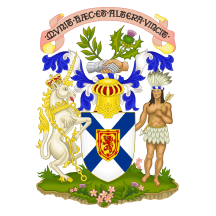ST. JOHN’S, Newfoundland and Labrador — An evacuation alert has been issued for over 13,000 residents living on the outskirts of St. John’s due to a rapidly growing wildfire. Premier John Hogan announced the precautionary alert late Monday for parts of two towns, Paradise and Conception Bay South, located southwest of the city.
Residents are advised to prepare emergency kits that will sustain them for at least 72 hours. The wildfire ignited near Paddy’s Pond, approximately 15 kilometers south of downtown St. John’s, and has expanded to cover about two square kilometers. In response, four water bombers have been deployed to combat the flames.
As of Tuesday morning, five active wildfires in the province are classified as out of control, with three located in Newfoundland and two in Labrador. The largest fire, which began over a week ago near Kingston on the northwestern shore of Conception Bay, has grown to 52 square kilometers and has already displaced around 3,000 residents.
Officials have not yet determined the extent of property damage caused by the Kingston fire, citing thick smoke that has hindered aerial assessments. In New Brunswick, three additional wildfires are also out of control, prompting evacuation preparations for residents north of Moncton.
The province's wildfire dashboard indicates that a wildfire reported south of Bathurst has been contained as of Tuesday morning. Despite dry conditions across much of New Brunswick, no evacuations have been necessary, and no structures have been lost. Firefighting efforts include 14 air tankers and three helicopters, with additional support from firefighters in Prince Edward Island and Maine.
Environment Canada has reported significant rainfall deficits across the Maritimes in June and July, particularly in northeastern and southern New Brunswick. A drought assessment from Agriculture Canada indicates that 56 percent of Atlantic Canada is experiencing abnormal dryness, with 90 percent of Nova Scotia classified as being in moderate drought. St. John’s has received only a third of its typical rainfall for the April to July period, while Halifax has seen about 40 percent of its usual precipitation.

 Canada News
Canada News

 National Post
National Post Medicine Hat News
Medicine Hat News Lethbridge News NOW
Lethbridge News NOW Local News in Nova Scotia
Local News in Nova Scotia CTV News
CTV News  Washington Examiner
Washington Examiner  AlterNet
AlterNet America News
America News Sarasota Herald-Tribune Sports
Sarasota Herald-Tribune Sports IMDb Movies
IMDb Movies